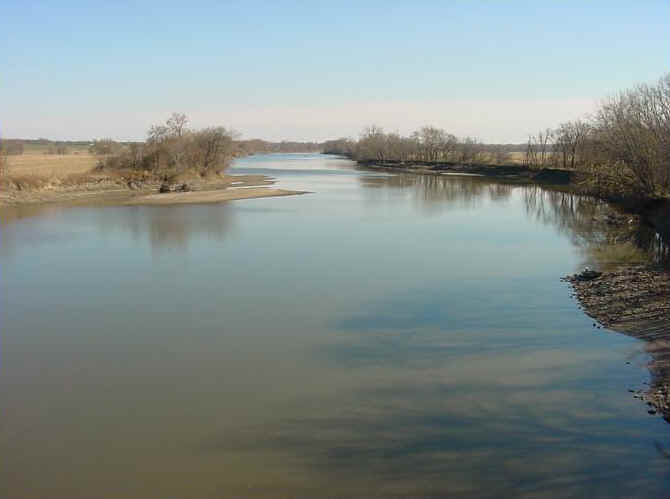Editorial: Iowa waterways need more attention
As our waterways become more and more prominent, many concerned with their health have begun a discussion as to how we should go about protecting them.
March 27, 2014
Everything in Iowa seems to slow down over our winter months. Fields normally producing vast quantities of crops lie in wait, humans and their animals become sluggish and our waterways become little more than a crisscrossing network of ice.
With spring finally arriving, Iowans will soon be busy putting our land into full production and many of us will begin filling our days with the various outdoor activities Iowa has to offer. Our streams and rivers have also returned to life, sweeping across our state with renewed vigor from thawed land and melted snow.
As our waterways become more and more prominent, many concerned with their health have begun a discussion as to how we should go about protecting them. Some will remember that in 2012 the Environmental Protection Agency was so dismayed with Iowa’s handling of our water systems that they threatened to step in and take over protection of our waterways.
That threat seems to have encouraged action, because Iowa has taken the first steps toward turning its environmental protections around. According to EPA regional administrator Karl Brooks, “Iowa is going in a direction that a lot of other states need to be going in. You’ve put the science into it, you’ve put the information out to producers.”
Brooks also acknowledged that Iowa is leading the way with regard to other midwest states, saying “ahead of other states in implementing their nutrient reduction strategy. From the standpoint of this agency, Iowa has met more of the commitments [for reducing nutrient pollution] than all of the states in the Mississippi River Basin.”
Unfortunately, this does not mean Iowa can rest on its laurels. Iowa’s Nutrient Reduction Strategy, formed in concert between Iowa government agencies and Iowa State University, is a good start, but it is just that: a start.
Setting up a statewide strategy for combatting nutrient pollution certainly fits into the state-centered efforts of the EPA to reduce the Gulf of Mexico hypoxic zone. That hypoxic zone or “dead zone” is caused by a flood of nutrients that promote algal blooms, which remove oxygen and kill off other, economically important marine life.
Since the effects of this “dead zone” are felt primarily by coastal communities, yet are the result of actions in over 30 states, a concerted effort is needed to promote better agricultural and industrial practices.
The Iowa Nutrient Reduction Strategy is unquestionably tailored for Iowans. There is nothing necessarily wrong with this, and even the EPA recognizes the benefit of this system, but ultimately nutrient pollution is not just an Iowa problem. Some of our approaches to nutrient pollution, including our refusal to utilize the EPA’s standards for nutrient concentration in waterways, seem to lose sight of the larger, national picture.
Additionally, the EPA and Army Corps of Engineers released a proposal earlier this week that would clarify which streams and wetlands are federally protected by the Clean Water Act. The proposal has been seen by some, such as Des Moines Water Works CEO Bill Stowe, as not going far enough to protect our water. Others, like the Iowa Farm Bureau Federation, disagree, complaining of the potential detriments to farmers and the agriculture industry.
It is clear that Iowa, like other states, is somewhat divided on how to proceed with water quality reform. We should not hesitate to enact new policies that would protect our waters, though. For far too long we as a state have benefited economically from under-regulation. It is time to place more importance on the health of Iowa’s waters and our effect on those downstream.

















